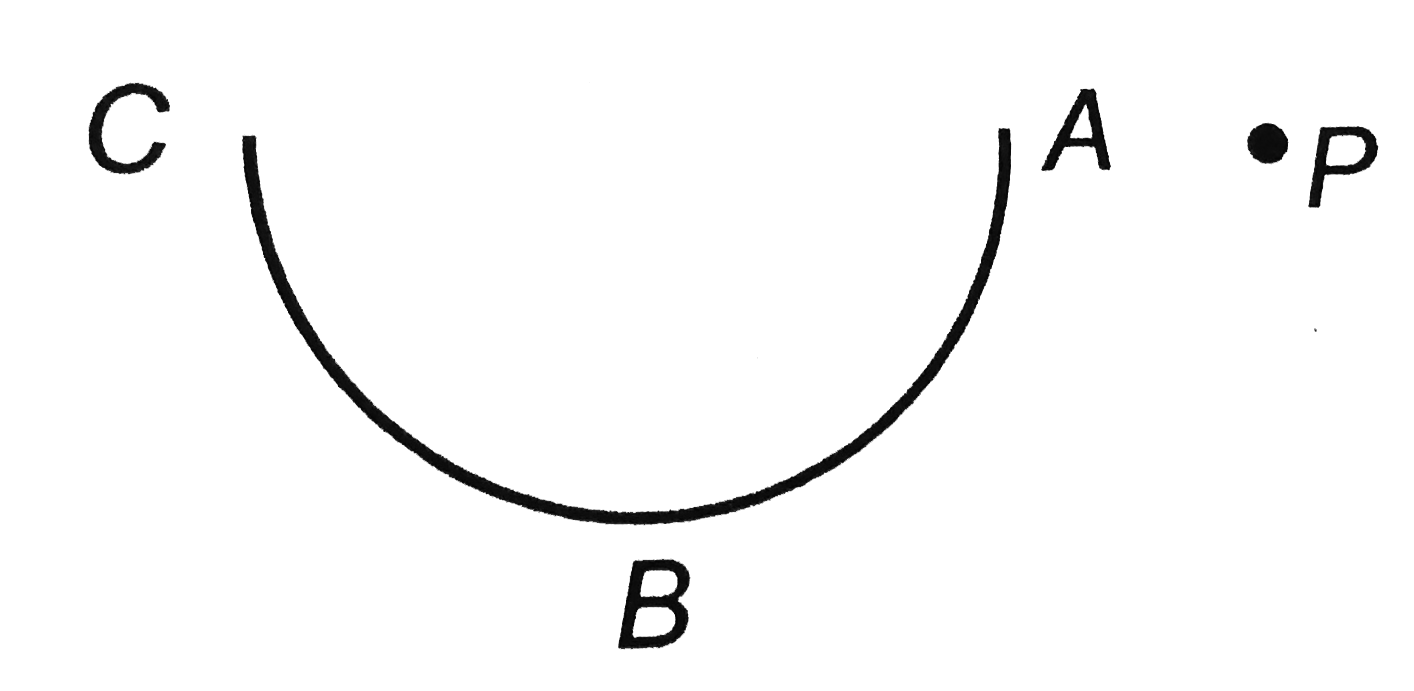In the following diagram the work done in moving a point charge from point P to point A,B and C is respectively as WA,WBandWC, then

WA<WB<WC
WA>WB>WC
WA=WB=WC
None of these
The correct Answer is:3
VA=VB=VC
WA=q(VA−VP),WB=q(VB−VP),WC=q(VC−VP)
WA=WB=WC
Topper's Solved these Questions
Similar Questions
Consider the situation of figure . The work done in taking a point charge form P to A isWA from P to B is WB from P to C is WC.

View SolutionThe work done in moving a particle in the gravitational field of earth from point A to point B along three different paths 1,2 and 3 are W1,W2 and W3 respectively , then

View Solution
Knowledge Check
When 1 J of work is done in moving a charge of 1 C from one point A
A1 A current between points A and BB1V of potential difference between points A and BC1.6×10−18 C of charge between points A and BDNone of the aboveThe work done in taking a unit positive charge from P to A is WA and P to B is WB. Then
 .AWA>WBBWA<WBCWA=WBDWA+WB=0
.AWA>WBBWA<WBCWA=WBDWA+WB=0How much work is done in moving a charge of 4 C across two points havng a P.D. of 10 V ?
A40 JB0.4 JC2.5 JD4 J
If W1W2 and W3 represent the work done in moving a particle from A to B along three different paths 1.2 and3 respectively (as shown ) in the gravitational fieled of a point mass m, find the correct relation between W_(1) W_(2)andW_(3)

View SolutionIf 6W is the work done in bringing a infinitesimal small test charge 6g from infinity to a point P, then potential at point P is
View SolutionAs per this diagram a point charge +q is placed at the origin O. Work done in taking another point charge −Q from the point A(0,a) to another point B(a,0) along the staight path AB is:

View SolutionThe work done in carrying a charge of 5μC form a point A to a point B in an electric field is 10mJ. The potential difference (VB−VA) is then
View SolutionA gas of given mass, is brought from stage A to B along three paths 1, 2 and 3, as shown in the figure. If the amount of work done in these three processes is respectively equal to W1,W2 and W3, then–

View Solution

